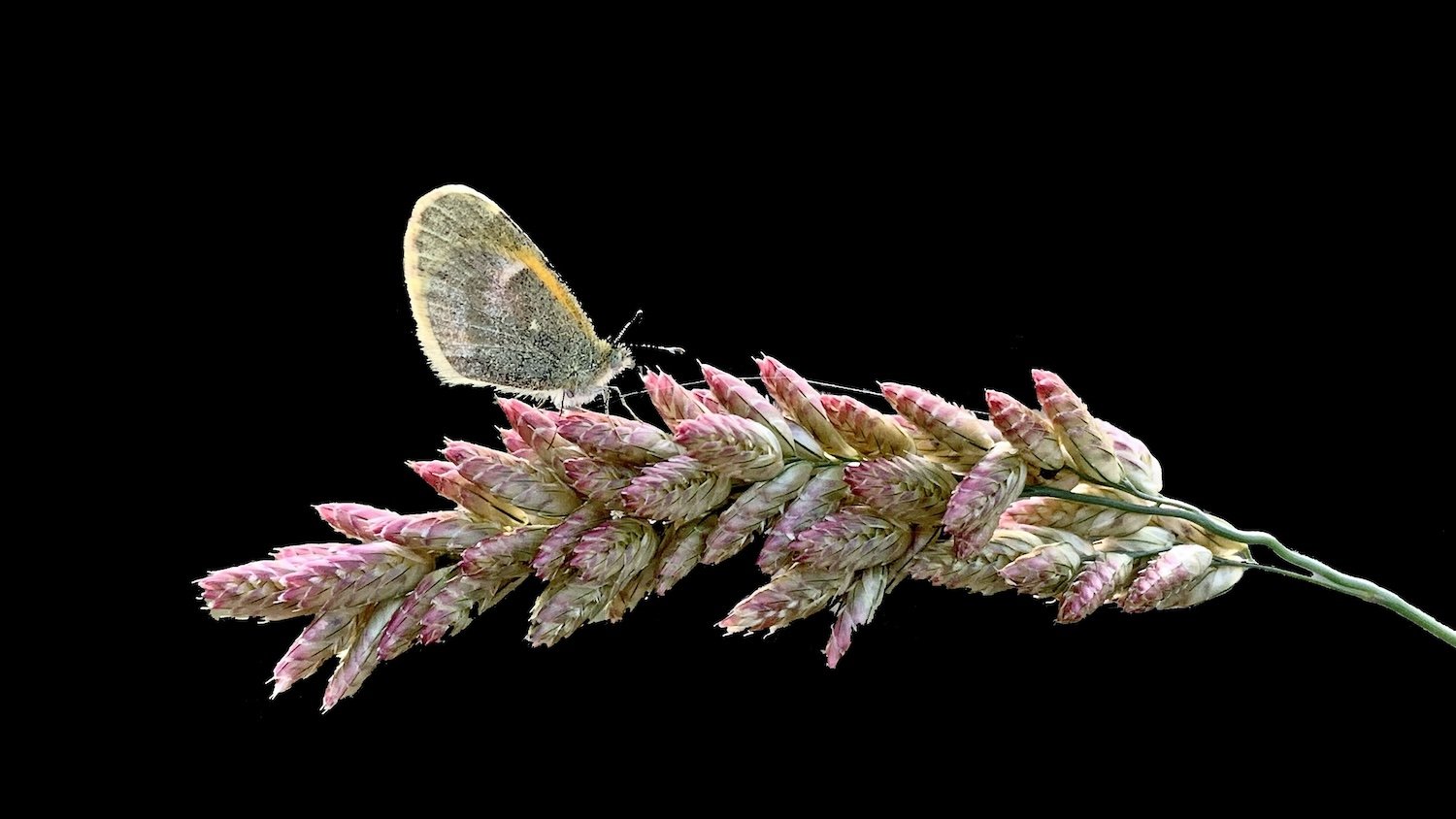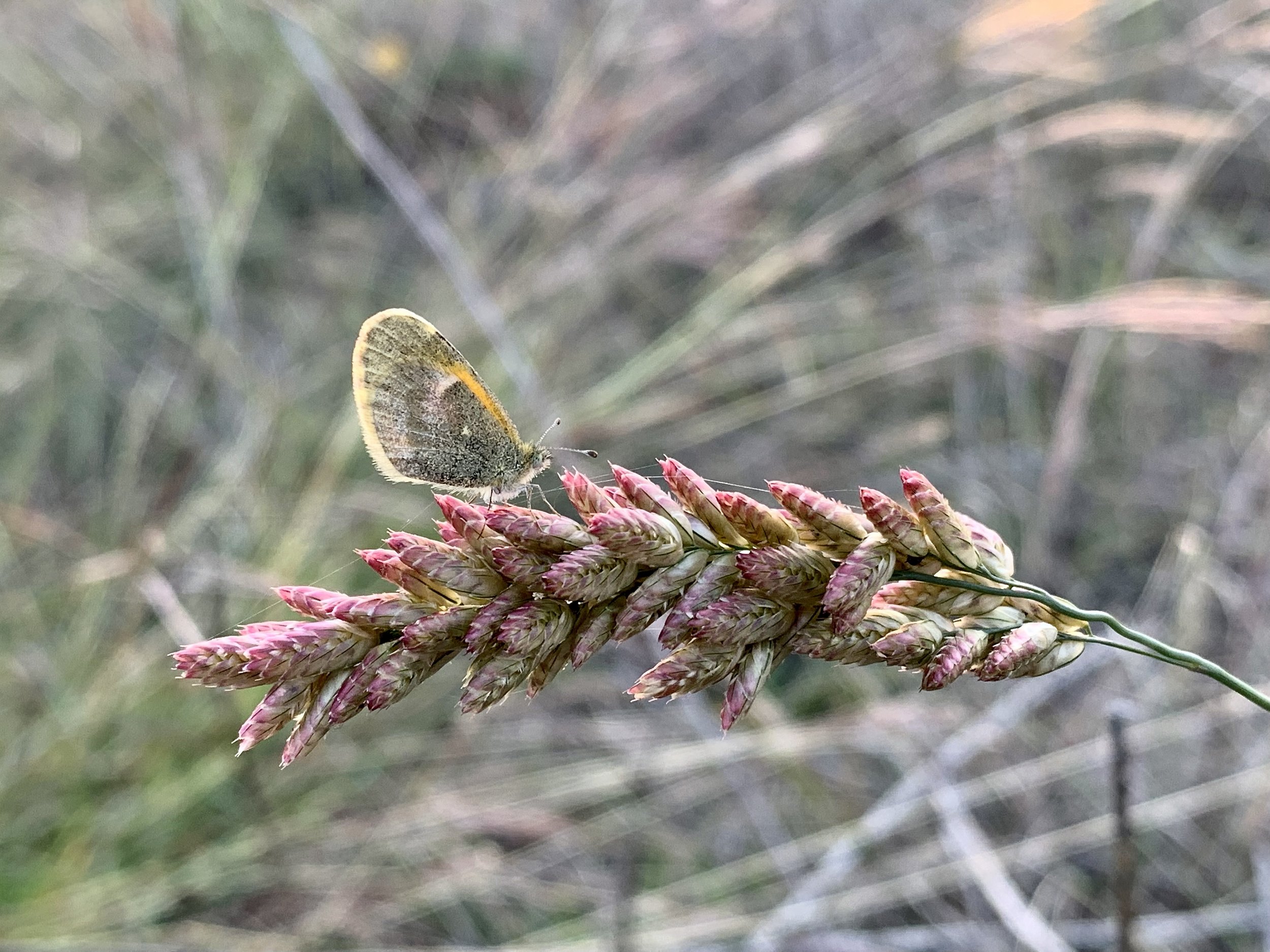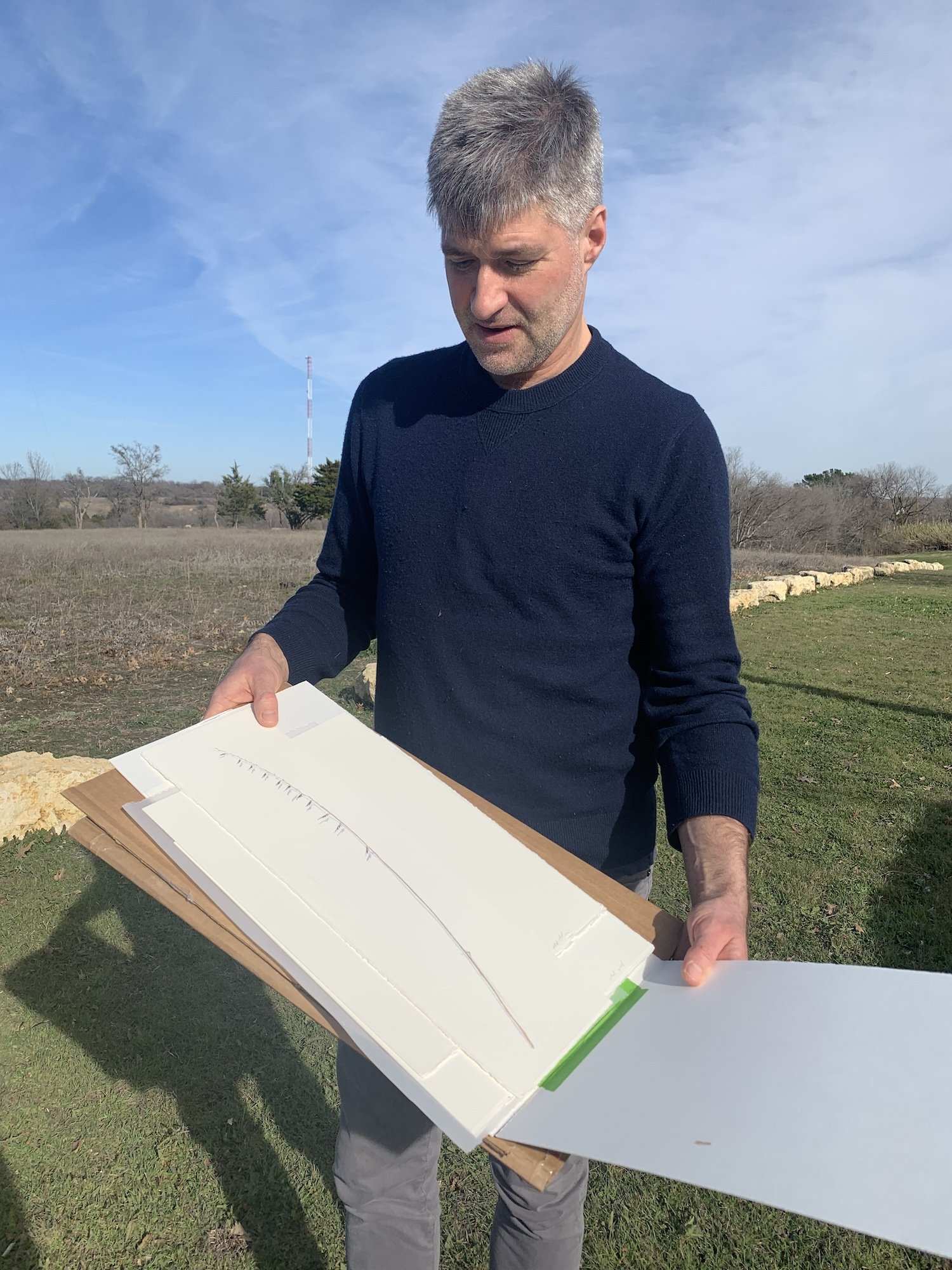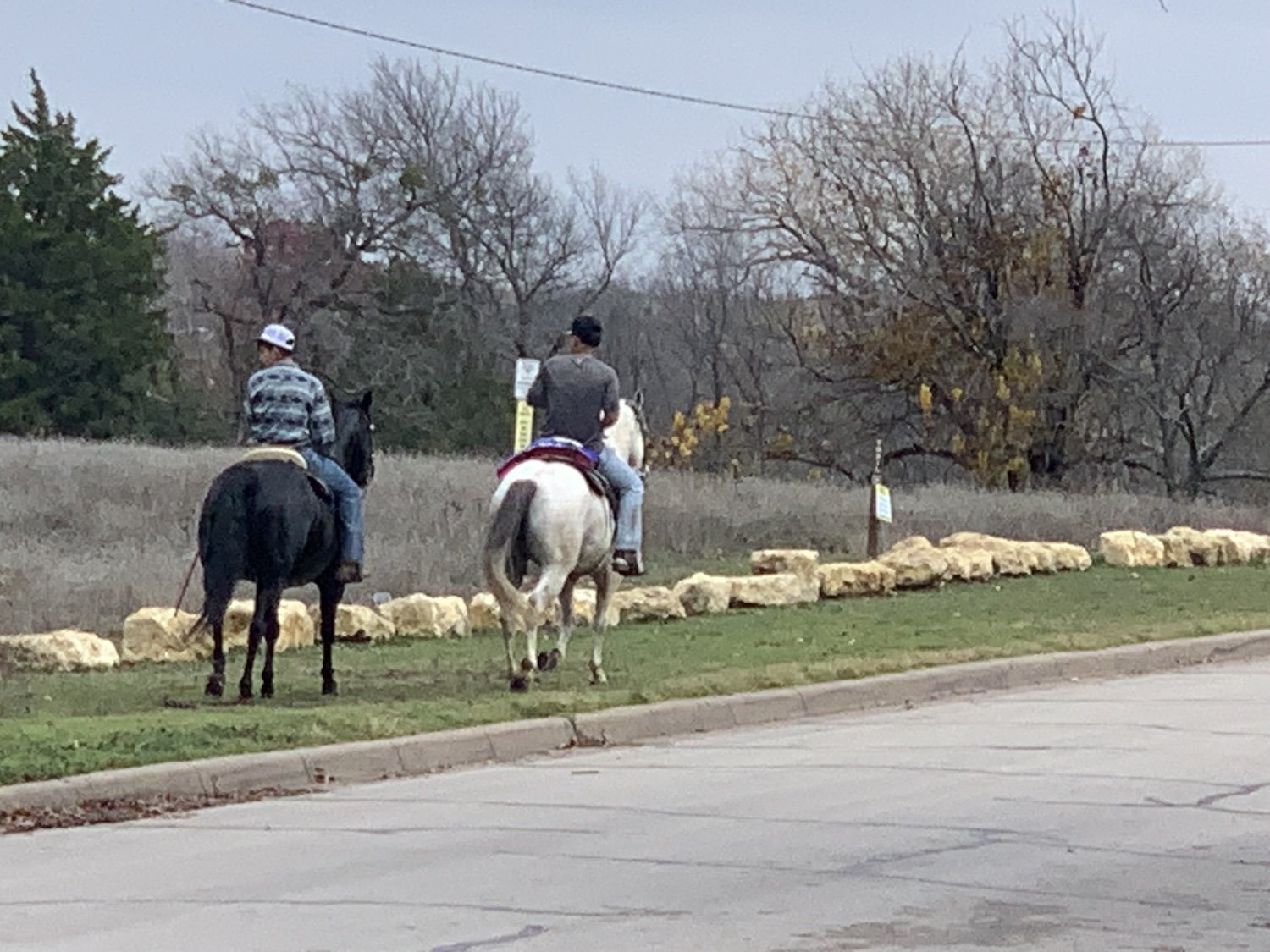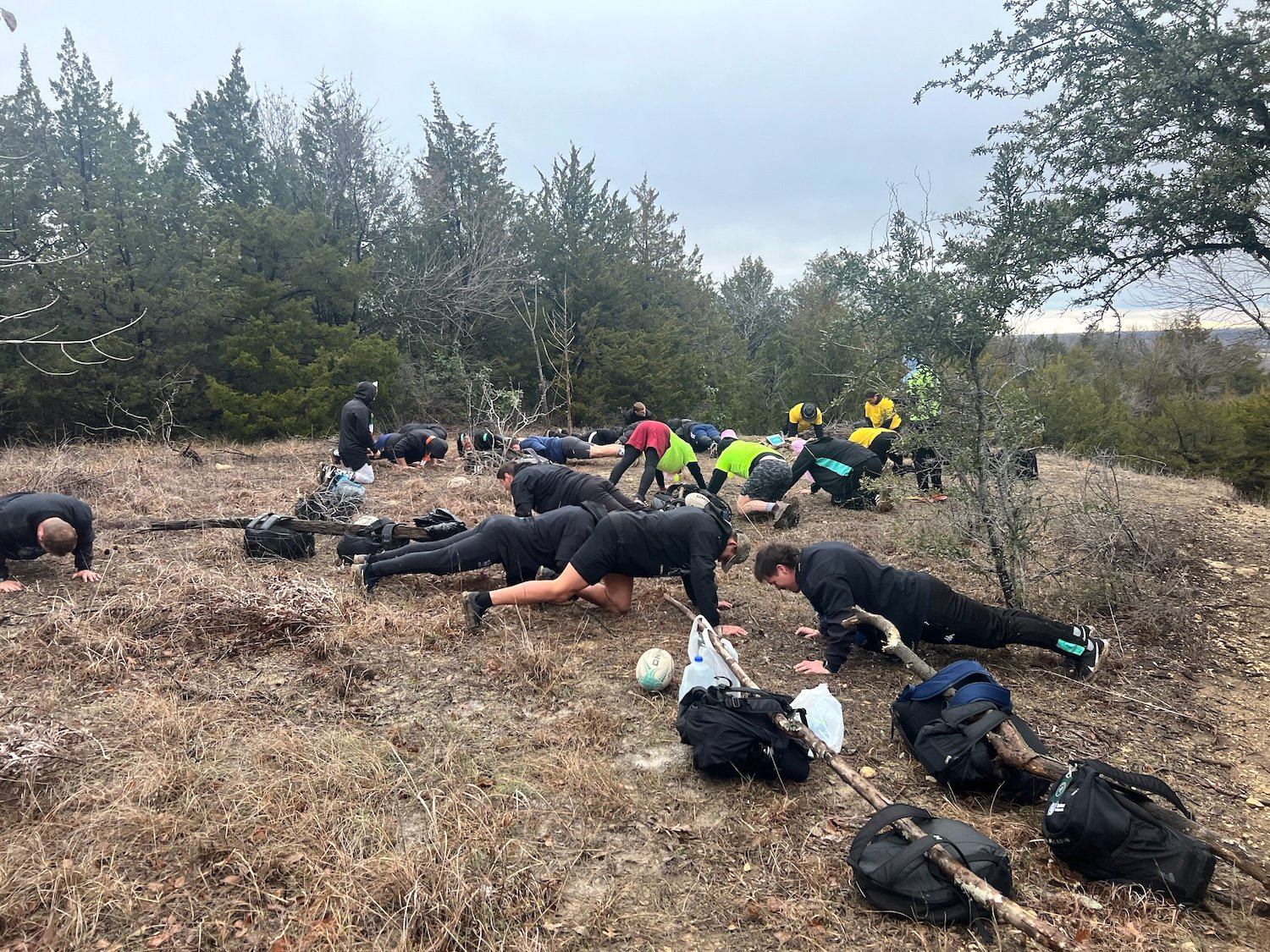Prairie Notes #206 - Not So Dainty Sulphurs
Prairie Notes are monthly photo/journal observations from Tandy Hills Natural Area by Founder/Director, Don Young. They include field reports, flora and fauna sightings, and more, mixed with a scoop of dry humor and a bit of philosophy.
They are available free to all who get on the FOTHNA email list.
Not So Dainty Sulphurs
Prairie Notes #206
February 1, 2024
1) Not So Dainty Sulfurs
2) Field Report - January
3) New Species Report - January
4) Vandalism Report
5) Jackals Run Wild At Tandy Hills
6) PrairieSky / StarParty Report
7) Manly Men Wild Women Report
8) Prairie Proverb - Jane Goodall
1) Not So Dainty Sulphurs
Here we are 5 weeks into winter and most flying insects, including butterflies, have either perished from the freezes, hibernating or have migrated elsewhere. After hiking on an unseasonably warm day in January, I can testify that, one tiny species is still patrolling the prairie. Dainty Sulphur Butterflies (Nathalis iole) seem to be tougher than their common name.
I observed close to 50 individuals flying close to the ground on January 30. Looking back at some photos I’ve taken over the years, I see that most of them were taken in late fall and winter. These must be tough critters.
According to iNaturalist,
“This species is the smallest North American pierid (about 1.25” wingspan). The Pieridae family of butterflies is large, totaling more than 1100 species mostly from tropical Africa and Asia. Most pierid butterflies are white, yellow, or orange in coloration, often with black spots. The pigments that give the distinct coloring to these butterflies are derived from waste products in the body and are a characteristic of this family.”
FUN FACT: The name "butterfly" is believed to have originated from a member of this family, the Brimstone Butterfly, Gonepteryx rhamni, which was called the "butter-coloured fly" by early British naturalists. (The word “brimstone” is an old name for sulphur which is the color of the male’s wings.)
I also learned on iNat that, males patrol just inches above the ground in search of females. That’s exactly what I have observed at Tandy Hills. They would also rest on tall plant stems where they resembled yellow leaves. Interestingly, they are supposed to migrate to warmer climes, yet, here they are in large numbers.
As I walked across the prairie filled with literally, millions of seed heads and remnants of last springs Indian Blanket Superbloom, dozens of the tiny yellow butterflies floated up in my wake like a January fireworks show. It was a joy to see such resilient insects glistening in the late afternoon sunlight.
As always, thanks for reading these Prairie Notes and supporting Friends of Tandy Hills Natural Area.
DY
2) Field Report - January
The weather was not that great for hiking in January, but a few significant things happened. The recent freeze greatly reduced the number of insects that were still hanging on, with the exception of Dainty Sulphurs. We had an unexpected visit from artist and botanist, James Prosek. (His exhibition at the Carter Museum has been extended until May 12th.) Despite the cold, wet and muddy conditions, I managed to find a few early signs of spring and other things of interest.
3) New Species Report - January
The species count was unchanged at, 1989, in January. Not many folks ventured out due to cold and wet weather and muddy trails. You can check out the Tandy Hills iNat Project Page HERE.
ALSO . . . check out this cool new iNat video from Texas Parks & Wildlife Department featuring, Sam Kieschnick, HERE.
4) Vandalism Report
I was invited to address the Fort Worth Park & Rec Board (PARD) members in late December and again in mid-January. The subject was security concerns at Tandy Hills, a long-standing problem here. Homeless camps, portrait photographers, ATV riders, horseback riders, trash dumping, plant thieves, we’ve had it all. Just getting this meeting with the PARD Board was a sign of progress, but many of the board members seemed genuinely concerned. They heard reports from the summer interns and park staff. They also heard that despite a budget request from PARD staff to do hire a park Ranger for 2024, the request was denied.
However, there are plans in the works to increase FWPD awareness of the problems, continuing to monitor photographers and educate them on rules and re-submit a budget request for Park Rangers in 2025. Additionally, the main wildflower meadows have been formally identified and should receive additional signage and barriers to keep photographers out. There are signs of change. Only time will tell if actual actions will follow.
5) Jackals Run Wild at Tandy Hills
NO, it’s not a new species but it is NEW and different. About 50 players and coaches of the professional, Dallas Jackals Rugby Club, held a team-building hike at Tandy Hills on January 27th. The guys are based in FW/D but are originally from countries such as, Wales, Italy, Ireland, Argentina, South Africa, Australia, New Zealand and other countries. The event was organized by Bill Yates of The Sports Advisory Group. Friends of Tandy Hills rep, Cody Eugene McCoy, greeted the team and hike with them. BAREFOOT. The young men behaved themselves and left no trace of their visit.
6) Prairie Sky / Star Party report
The Fort Worth Astronomical Society (FWAS) will be back in March 2024, for the 9th straight year at Tandy Hills. Until then, I will post sky-watching commentary every month from FWAS rep, John McCrea, for home use. (See below) You can also view the 2024 PrairieSky / StarParty schedule HERE.
“For the month of February, the nights will be cold, but the seeing is better because the cold air is drier, making the sky seem to be ablaze with stars. The Milky Way will stretch from southeast to northwest instead of arching overhead from south to north as it did in the summer. We will have our familiar winter constellations. Among the constellations visible will be, Orion (the Hunter), Gemini (the Twins). Canis Major (great dog) and Canis Minor (little dog) rising in the east. Cassiopeia (Queen of Ethiopia), Pegasus (the Winged Horse) and Andromeda (daughter of Cassiopeia and Cepheus) will be high in the sky. Perseus (Rescuer of Andromeda), Taurus (the Bull) and our friend the Pleiades (the seven sisters). The winter triangle (Procyon (11.5 LY), Betelgeuse (500 LY), and Sirius (8.5 LY)) will in the east. Our circumpolar friend Ursa Major (the Great Bear) will be nose-up on the east-northeast horizon. The winter hexagon, consisting of Capella, Aldebaran, Rigel, Sirius, Procyon, Pollux, and Castor will be visible in the south/southeast.”
7) Manly Men / Wild Women Hike Report
We had a big turnout of more than 100 happy hikers and a few dogs on a chilly New Year’s Day to hike the 2.63 miles of trails. Despite a little trail mud everyone had a great time and earned their certificates of completion. I want to thank Raul Perez and Debora Young for helping mark the trails. See you all next year!
8) Prairie Proverb
“To reconnect with nature is key if we want to save the planet.”
Become a member here: https://www.tandyhills.org/donate
Prairie Notes© is the official newsletter of Friends of Tandy Hills Natural Area, a 501 (c)(3) non-profit organization. All content by Don Young except where otherwise noted.



